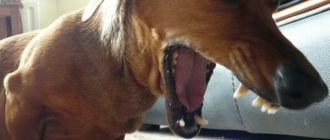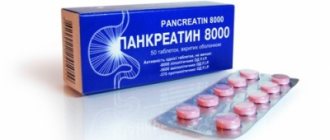Corvalol is a common and very well-known medicine that can most likely be found in any home medicine cabinet. Has a pungent odor and a sedative effect.
The composition, in addition to natural menthol-based components, contains ethyl ether and phenobarbital. The latter causes the greatest concern among dog breeders. We will discuss below how possible the use of Corvalol in veterinary medicine is.
Is it possible to give?
As a sedative
Dogs can be even more stressed than humans. When you need to go from point A to point B, when you need to be examined at a veterinary clinic, animals simply do not understand why they are in a dark carrier or are subject to injections.
Because of fear before, during, and after such events, you may need not only an abundance of stroking, but also quite physiological sedation, so a sedative can be useful not only for people, but also for their pets.
In cases of increased stress, Corvalol is recommended by dog breeders and veterinarians.
Of course, if possible, you need to protect your dog from stress factors, and most importantly, follow the dosage.
For epilepsy
Epilepsy in dogs is a severe and common neurological disease.
Some breeds are more susceptible to it. Attacks can be observed throughout life, they are accompanied by increased nervousness, followed by convulsions. The final stage of the attack is a general depressed state up to loss of consciousness.
Seizures in dogs can occur several times a day. A loving owner’s heart breaks at the sight of such a picture, and it’s even harder for the dog itself. For dog breeders whose pets suffer from these diseases, Corvalol is always in the most visible place.
According to reviews, this is one of the few truly effective emergency medicine drugs.
From the heart
Heart disease can manifest itself in different ways, although there are similarities:
- fast fatiguability;
- hard breath;
- appearance of cough;
- blue tongue;
- fainting.
Any heart disease is diagnosed during examination with a cardiogram and ultrasound of the heart.
Corvalol is used in veterinary medicine and is intended to alleviate suffering in pets, due to the equalization of heart rate and the general sedative effect of the drug.
Other
In practice, another possible use is a sleeping pill. In this case, it can be used strictly following the dosage.
Corvalol will also help survive heat and sunstroke.
Used in the initial stages of arterial hypertension.
But you need to understand that Corvalol is not a treatment in such cases, but only temporarily relieves and briefly alleviates the condition of the pet.
Can a dog have Corvalol for a heart attack?
Corvalol for dogs - heart drops as a first aid remedy for attacks and stress.
For heart pain, a person takes drops, but pets can also suffer from heart pathologies. Is it possible to give a dog Corvalol during an attack? This is a question that arises for the owner when the pet needs urgent help.
general description
Corvalol is a drug with a calming, sedative effect. The medication is produced in two forms - drops and lozenges (under the tongue).
Composition and action
The drug contains phenobarbital, menthol and ethyl ester of b-bromoisovaleric acid (plant component, essential oil of valerian officinalis).
The active ingredient phenobarbital sodium has vasodilating and sedative effects and does not have a hypnotic effect.
Menthol - peppermint oil - has reflex vasodilator and antispasmodic properties, ethyl ester enhances the effect of the two components and has a sedative and antispasmodic effect.
Important!
Corvalol drops contain alcohol.
The drug is used:
- with functional disorders of the cardiovascular system;
- tachycardia;
- states manifested by increased irritability;
- sleep disorders;
- for stomach cramps.
In a similar way, the medicine acts not only on humans, but also on pets. However, before giving your dog Corvalol, you should make sure that there are no contraindications for use.
Purpose
Corvalol has a calming effect on pets. Therefore, it is used as a sedative for stress. Many factors can cause nervousness in a dog:
- loud sounds - thunder during a thunderstorm, gunshots, sounds of fireworks, etc.;
- long trips;
- change of home;
- long absence of the owner;
- visits to the veterinarian and medical procedures;
- cosmetic procedures;
- participation in exhibitions, etc.
In the presence of stress factors, the dog’s behavior changes; it may whine and rush around, bark loudly. Corvalol quickly calms the pet - the dog stops being nervous and falls asleep.
Heart pathologies in dogs
In most cases, the drug is used when a heart attack is suspected. Animals, like people, can suffer from heart pathologies.
The heart is a “motor” that pumps blood through the tissues of the body. The blood contains oxygen and nutrients, which penetrate the cells through a complex system of blood vessels.
In most cases, heart pathologies are caused by a decrease in the efficiency of blood pumping.
There are two types of diseases diagnosed in dogs: when the heart valve or heart muscle is affected. With chronic valve disease, the volume of blood that passes through the heart valve and spreads to the organs and tissues of the body decreases. Pathology of the heart muscle is associated with its weakening or thickening. In both cases, the efficiency of blood pumping decreases.
Important!
To keep your pet active, it is necessary to provide him with a consultation with a veterinary specialist, who will prescribe the necessary medications and calculate the exercise regimen.
The reasons for the development of cardiovascular diseases can be different. This includes the age factor, feeding errors, and a genetic predisposition to this type of pathology. Veterinarians identify the following main reasons:
- physical condition of the animal. Excess weight can lead to the development of heart failure in animals over time;
- increased physical activity;
- frequent stress;
- elderly age;
- genetic predisposition to heart disease.
Valve disease is most often diagnosed in dogs of small breeds - Spitz, Schnauzer, miniature poodles, cocker spaniels, etc. Large animals are more likely to have problems with the heart muscle. At risk are Great Danes, Irish Wolfhounds and some other breeds.
Lack of oxygen in the brain leads to neuralgic diseases; the acute form of the pathology is characterized by a rapid increase in symptoms and can be fatal within literally a few hours.
First, wheezing, shortness of breath, increased heart rate are noticed, then the mucous membranes turn pale. When the pulmonary circulation is disrupted, pulmonary edema develops. It may be accompanied by bloody discharge from the animal's nose and mouth.
Death occurs from acute asphyxia. But with timely treatment of the pathology, such consequences can be avoided.
Chronic heart failure, even of a genetic nature, can be characterized by long periods of remission and guarantees the animal a long life.
Even in absolutely healthy animals without congenital pathologies, the heart begins to “get tired” with age, so physical activity decreases.
Some breeds may be more susceptible to cardiovascular disease in older age.
Owners of giant breed dogs – St. Bernards, Newfoundlands, Great Danes, etc. – should closely monitor the health of their pets, undergo regular veterinary examinations and monitor their hearts.
Shortness of breath, cough, or heavy difficulty breathing in a pet after physical activity is a reason to immediately contact a veterinarian. Other symptoms to watch out for:
- rapid fatigue of the pet during training or a long walk;
- frequent and usually muffled cough, which may be accompanied by a gag reflex;
- difficulty breathing, shortness of breath;
- decreased physical activity;
- loss or, conversely, sudden weight gain;
- bloating;
- numbness or swelling of the limbs;
- pallor, cyanosis of the mucous membranes, tongue;
- short-term loss of consciousness.
First aid
If you suspect a heart attack in your pet, you should immediately call a veterinarian, and before his arrival, provide first aid to the dog. Medicines Corvalol and some others can literally save an animal’s life.
How to provide first aid:
- place the animal on the bedding;
- give 5-15 drops of Corvalol or 5 drops of Cordiamin;
- during convulsions, calm down by holding in place and lightly stroking;
- Give the aromatic salt a whiff if you have difficulty breathing.
Important!
These remedies will not eliminate the attack, so it is necessary to ensure that the animal is delivered to the veterinarian as quickly as possible or called to your home.
Restrictions
Veterinarians have differing opinions regarding the use of Corvalol for pets. Some believe that the presence of barbiturates in the drug can cause instant death, but in fact their content in the drops is minimal, so if the dosage is observed, the medicine cannot cause harm.
However, taking Corvalol should be prohibited for animals suffering from hypersensitivity to the components of the drug, liver or kidney pathologies. Heart drops should not be given to pregnant or lactating females.
Violation of the dosage can cause negative manifestations in the form of diarrhea, abdominal pain, and skin reactions. The acute form of poisoning is manifested by confusion, drowsiness, and loss of coordination in space.
Analogs and price
Heart drops are sold at any pharmacy at a low cost. The price for a bottle of Corvalol starts from 13-17 rubles. You should consult your veterinarian about the possibility of replacing Corvalol with other medications. Among the medical drugs acceptable for use in veterinary medicine are heart drops Valocordin and Cordiamin.
Reviews
Anna, owner of the English Setter
The vet recommended giving Corvalol to our dog when she is stressed. And this happens, although not often, but is manifested by throwing around the apartment and howling. I give 10 drops, dilute them with water and drink them through a syringe. The dog quickly calms down and falls asleep. I try to be near him at this time, stroking him.
Aina, owner of the Giant Schnauzer
Our dog is big, but shy. Afraid of thunder, firecrackers, fireworks. In addition, he is hypertensive and suffers from heart failure. For us, Corvalol is a life-saving remedy, although I try to give it as rarely as possible.
Ilya, veterinarian
Corvalol is not used to treat serious pathologies; it is a quick remedy for heart attacks. It also helps with severe fear in dogs. It should be given carefully, as with any other medicine.
Source: https://kupipet.ru/articles/mozhno-li-sobake-korvalol-pri-serdechnom-pristupe.html
Contraindications
Be careful! Corvalol is used in the initial stages of heart disease. In case of a serious progressive illness, Corvalol will be strictly contraindicated.
Also does not apply to:
- serious kidney and liver diseases;
- revealed sensitivity to the components of the drug;
- The presence of arterial hypotension is also a reason for prohibiting the use of Corvalol.
Not to be confused:
- hypotension – low blood pressure;
- hypertension – high blood pressure;
Instructions for use
Most animals flatly refuse to take medications. Pets chatter their teeth, spit out medication, drool and vomit in all possible ways. The question “how to give Corvalol to a dog” arises especially acutely if the breed is large.
Experts and veterinarians offer a cunning algorithm for this:
The required number of drops of Corvalol is dissolved in water and given to the dog.
- Dilute the drug with sweetened or plain water.
- Pour in the solution in one motion using a syringe or plastic spoon (herbal preparations should not come into contact with metal). It is convenient to take the dog by the nose, slightly pull the corner of the mouth, calmly inject the medicine into the cheek and immediately lift the muzzle up. Keep your head in this position, stroke the throat until the pet swallows.
- Give the “sick” a favorite treat to overcome the unpleasant taste of Corvalol.
If there is any doubt that the drug may cause harm, there is another option for use. The medicine is dripped into a dish of water and placed 15 cm from the animal’s muzzle. Or they move it in front of the nose (no closer than 10 cm) with a cotton swab moistened with Corvalol.
Corvalol dosage for dogs
For any method of use, dosages must be observed.
How many drops to give depends on the size of the dog:
- Decorative breeds (up to 15 kg) – 5-7 drops;
- Medium breeds (15-30 kg) – 10-12 drops;
- Large breeds (from 30 kg) – up to 30 drops.
For panic attacks, minimum doses are given 2 times a day.
Contraindications
Strict contraindications for taking Corvalol include hypersensitivity, pregnancy and lactation of the dog, liver and kidney pathologies.
Overdose
It is expressed in stool disorders (diarrhea), the dog’s painful reaction to touching the abdominal area. Allergic skin rashes and scabies are possible. In the acute form, confusion, loss of coordination, and prolonged drowsiness are observed.
In case of overdose, symptoms are observed: drowsiness, confusion, diarrhea.
Treatment of overdose is symptomatic at the discretion of the veterinarian. As first aid, offer the animal a large amount of water and activated carbon. A drip and gastric lavage may be needed.
Dosage
The most important point in the use of Corvalol is its dosage. The veterinary world is basically divided into two warring camps. Some are for the possibility of using Corvalol, others for their categorical abstinence from it.
The fact is that it contains barbiturates and there is an opinion that their effect on the dog’s body is so great that it can lead to the instant death of the pet.
Indeed, phenobarbital contained in Corvalol belongs to the group of barbiturates - potent substances, some of which are classified as narcotic. But according to the experience of hundreds and thousands of dog owners and veterinarians, it confirms only a therapeutic, not a fatal effect.
Therefore, taking into account contraindications and observing the necessary dosages, the use will not only not kill the dog, but can also save its life.
How many drops?
The required dosage is calculated based on the weight of the animal and the purpose of use. If an epileptic seizure occurs or heart disease manifests itself, then the following number of drops must be used.
| Weight, kg | Number of drops |
| Up to 15 | 5-7 |
| 15 — 30 | 10-12 |
| From 30 | up to 30 |
If Corvalol is used to calm and relieve nervous tension, it is recommended to reduce the dose corresponding to the weight by half.
How to give?
There are several ways to use the medicine.
- Dilute the required number of drops in a saucer of sweetened water to mask the bitterness of the medicine as much as possible.
- Drop a sugar cube or a piece of bread and try to give it.
- Dilute the drops in a tablespoon of water, draw this solution into a syringe without a needle and pour the contents into the dog’s mouth.
If the dog's condition is not critical, it is necessary to give him affection and treats.
In tablets
In addition to the popular drops, the medicine is also available in tablets. The main difference between tablets and drops is that the tablets do not contain barbiturates, so their use is less effective, but safer.
The tablets do not contain phenobarbital.
The effect of the tablets is milder. Therefore, their use is justified when it is necessary to relieve a pet’s nervous tension. If necessary, you need to give one tablet up to two times a day.
You need to understand that the tablets are more of a sedative than an emergency medicine in case of an attack, when you only need to use drops.
It is not recommended to use Corvalol tablets for insomnia, because phenobarbital has a hypnotic effect. The tablets will cause general depression of the central nervous system, the pet will be depressed and weak, but will not fall asleep.
Eye drops for dogs: which ones are possible, a review of effective remedies
Pets can have vision problems. But not every owner knows what causes them and how to help their four-legged pet.
In some situations, eye drops for dogs, which are sold in veterinary pharmacies, can be a good help.
Ophthalmological problems in dogs for which eye drops are used
Even a small speck of dirt that gets into the eye can cause vision problems.
It is impossible to eliminate ophthalmological problems on your own, but you should seek help from a specialist immediately when the first signs are detected. Each situation manifests itself in its own way, and it is important to recognize it in time.
Cataract
Cataracts are a common diagnosis for humans, but this disease can also develop in adult dogs. It manifests itself as clouding of the lens, which is difficult to notice immediately.
If the owner properly cares for the pet and devotes time to eye hygiene, he will notice clouding of the eyes and a change in the shade of the pupil..
A cloudy lens impairs vision, and this affects the animal's behavior. The dog becomes less active and in some situations shows caution, because it has to rely more on hearing and smell.
Cataracts are considered a genetic disease. But besides heredity, there are other factors that provoke the problem:
- age;
- injuries and concussions;
- endocrine diseases;
- decreased immunity;
- long-term medication use.
Often cataracts are a consequence of other eye diseases - uevit, glaucoma. In any case, the dog should be examined by a veterinarian to find the true cause of the clouding.
Frequent squinting
When a person has vision problems, he begins to squint his eyes in order to better distinguish objects. Animals do this too.
The symptom cannot be ignored, because it indicates serious diseases from conjunctivitis to erosion.
Squint in dogs can occur in the following cases:
- with corneal injury;
- exposure to pathogenic microflora that provokes an inflammatory process;
- as an allergic reaction to an irritant;
- if dry eye syndrome has developed.
Ignoring the problem leads to corneal ulceration. As a result, the animal loses its vision.
Sometimes squinting is caused by photophobia, which is a sign of plague or rabies. This is already dangerous not only for dogs, but also for people around them.
Changes in conjunctival color
A thin film called the conjunctiva is responsible for keeping the eyes moist. In its normal state it is transparent, so it is not noticeable.
When problems with vision occur, the fabrics change shade:
- Yellowness is a sign of an infectious disease called babesiosis (similar to malaria).
- Blueness is caused by problems with the respiratory or cardiac system.
- Red eyes – reaction to:
- inflammation of the conjunctiva;
- pathology of the organs of vision;
- corneal injury from physical, thermal or chemical exposure.
The conjunctiva may also turn red due to allergies caused by dust, medications or chemicals, food, pollen and other irritants.
The most dangerous symptom is considered to be porcelain pallor of the mucous membranes, which is a sign of severe conditions developing in the body - anemia, blood loss, etc.
Purulent discharge
When the eyes water, this is a serious sign, but the appearance of pus is evidence of a dangerous condition of the organs of vision. It is caused by injuries to the cornea, tear duct or membrane of the eye.
Another reason could be a secondary infection affecting the mucous membrane.
Having discovered such a sign in a dog, you should not delay treatment. Pus is not released from the eyes immediately, but only a few days after the onset of the inflammatory process, which indicates a protracted process.
Injury
One sign of eye damage is squinting.
Trauma also manifests itself with other symptoms:
- the sore eye does not just water - the discharge becomes profuse, often mixed with blood or pus;
- upon visual examination of the cornea, whitish spots and stripes are visible on it;
- the conjunctiva becomes cloudy, causing the dog to see worse.
With mechanical damage to the eye, the pain is so severe that the animal does not allow the owner to touch the affected area.
Particular concern should be caused by a pet's concussion resulting from a blow to the head. In this case, the cornea can rupture, capillaries burst, which leads to intraocular bleeding.
The danger of a concussive lesion is that the first signs of the problem do not appear immediately.
Proper dog care
When the owner is attentive to the pet, most problems can be avoided. Care includes preventive measures and timely treatment.
Eye hygiene
Problems with the visual organs are more likely to occur in dogs with protruding eyes. But this does not mean that pets of other breeds do not require daily care.
Hygiene is performed using a special solution or using drops; warm boiled water is also suitable.
When carrying out the procedure, the following rules are observed:
- Apply a few drops of solution to a smooth cotton pad or sterile gauze swab;
- removal of impurities and dried exudate is carried out by moving from the outer corner of the eye to the inner;
- If the dog has long bangs, they are combed back and secured with hairpins before the procedure.
When your pet experiences intense lacrimation and dark crusts form in the corners, it is recommended to wash the eyes more often (2-3 times a day).
Preventive actions
It is easier to preserve your pet’s vision if you take measures to prevent negative factors. Prevention includes:
- mandatory eye hygiene, which reduces the risk of developing inflammatory processes;
- regular examination of the organs of vision in order to study the shade of the conjunctiva and the presence of pus;
- choosing a place to walk the animal, taking into account the risk of injury;
- periodic visits to the veterinarian to identify health problems;
- timely consultation with a doctor at the first signs of problems affecting vision.
During dog training, feasible exercises are selected that eliminate the risk of head and eye injuries.
When choosing a puppy, you should ask the breeder whether hereditary pathologies, such as cataracts, can develop.
Treatment
The dog’s vision will be preserved by timely therapy, but it must be prescribed by a specialist. Having noticed the first symptoms of pathology, the owner takes the pet to the doctor for a diagnosis and choice of therapy after examining the animal.
If the situation is not advanced, you can get by with medicinal drops. For inflammatory processes, antibiotics are prescribed. Corneal trauma and cataracts require surgery.
Eye drops for pets
If you notice vision problems in your pet, you should not use human drops for treatment: they do not take into account the physiology of the animal (despite the similarity of pathologies).
It is better to purchase products designed specifically for dogs.
| Name | Short description |
| Bar" | The therapeutic effect is provided by 2 ingredients - chloramphenicol and furatsilin. Drops recommended:
Anti-inflammatory and anesthetic properties help well in the treatment of eye injuries |
| Tsiprovit | The main function is antimicrobial. The action extends to a large list of pathogens, including antibiotic-resistant organisms - mycoplasma and chlamydia The drug is used as a preventive measure, as well as in the treatment of most eye pathologies. Ophthalmologists use it when preparing an animal for eye surgery and after surgery as a means of accelerating vision restoration. |
| Iris | Gentamicin sulfate is effective against a wide range of pathogenic organisms. The peculiarity of the therapeutic effect is associated with the penetration of the drug through the cornea and its concentration inside the eye. This makes it possible to effectively use drops for pathologies of varying severity. |
Despite the availability of funds, only a doctor should choose eye drops for a pet.
The specialist is able to correctly assess the condition of the visual organ and prescribe appropriate therapy. The owner can independently buy the drug Diamond Eyes, intended for daily care of the animal. This is not only a hygienic product - the drops have a bacteriostatic effect.
They will help reduce tearfulness, relieve itching and redness. Taurine and the antioxidants it contains make Diamond Eyes a good first aid remedy for minor problems. Recommended for the prevention of age-related disorders in older dogs.
Side effects
The side effect will be drowsiness and a depressed appearance of the animal. In such cases, the dog must be provided with drink, rest and affection. You need to let the dog go. In this case, affection is recommended for a reason.
Dogs are actually very psychologically attached to humans, and therefore showing them love and attention can actually lift up your pet.
As mentioned earlier, there is a strong opinion that Corvalol can kill due to the presence of barbiturates. In fact, the medicine contains negligible amounts of barbiturates, so you are afraid that the animal received a couple of drops more. The effect may last a little longer, but does not pose a mortal danger to the body.
An overdose can cause gastrointestinal upset, leading to constipation or diarrhea; each individual has their own reaction.
To give or not to give
Many breeders are interested in whether it is possible to give Corvalol to a dog. There is an opinion that this medication is harmful to pets due to the barbiturate content. Side effects include possible instant death. Such rumors are not groundless, but they are false.
Corvalol is a sedative that is used not only for people, but also for dogs.
Corvalol itself does not threaten the life of the animal. The amount of barbiturate in the composition is so small that if the dosages are observed, death is excluded. Even an overdose does not lead to instant death, resulting in temporary poisoning. An erroneous opinion arose due to unsuccessful attempts to use Corvalol as the main means of treating cardiac pathologies.
IMPORTANT. Dogs with “heart disease” require more serious medications. Corvalol is not even able to be an “ambulance” for them. It does not stop an attack of cardiopathy, but only slightly eases the course. Lack of proper timely intervention leads to death.
To eliminate all concerns about barbiturates, you can use Corvalol tablets. They do not contain these substances at all.
Reviews from dog breeders
Svetlana. I use Corvalol as a sedative for my English Setter. My dog needs 10 drops per spoon of water. Veterinarian advised. Rarely useful, but works effectively. The dog quickly stops thrashing around and falls asleep. At the same time, I calm you down with my presence - I’m nearby, stroking, talking.
Ayushka. My dog has a heart disease and is hypertensive. We have been giving Corvalol for a long time, both for symptoms and when he gets scared (especially firecrackers). Then he sleeps peacefully.
As a sedative, some dog breeders give their pets the human medicine Corvalol. It is also recommended by some veterinarians. It acts quickly and quite effectively on dogs, just as it does on humans.
This need arises in various situations when an animal suddenly becomes nervous under the influence of some stress factor. So, dogs are quite nervous about traveling in transport, participating in exhibitions where there are a lot of strangers’ dogs and people.
They may become nervous during thunderstorms or strong fireworks displays, in crowded places, and generally in unfamiliar surroundings. Corvalol has a calming effect on the dog. She stops tossing around and getting nervous, and after a few minutes she calmly falls asleep. However, it is worth considering that Corvalol is not a systemic medicine; it should be given only directly at moments when the dog is highly excitable. They do not treat diseases, but only calm the dog down or maintain its condition until emergency help arrives if a heart attack is suspected.









